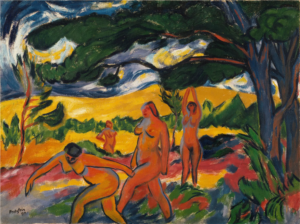Several towns in Germany, such as Hörstein, a small town in North Bavaria, have a system for waste disposal in which the garbage produced by each household is weighed, and then the household is charged per kilogram of waste they produce. This incentivizes German citizens to cut their garbage production as much as possible.
This practice could be extended to the United States. Like all infrastructure projects, there would be a cost associated with starting the program, but it would quickly begin to pay off. America currently leads the nations in terms of plastic waste produced per year, and it is reported that the main reason most Americans recycle as little as they do is a lack of convenient and available means to recycle. Some people are all-inclusive in what they throw into the recycling bins, but that only makes it harder to sort the trash out from the recycling, and sometimes the contents of the entire bin are resigned to the landfill rather than going through the labor of separating them.
Therefore, in the United States, this development would have to be accompanied by a push for more effective recycling and waste partitioning, following Germany’s model. A major hinderance of this in the United States would be the fact that this country does not have the same emphasis on recycling and partitioning of different types of waste. However, implementing this system would give people and companies an incentive to partition waste to be less wasteful. The hardest obstacle to overcome would be at the governmental level, since the reason there is less recycling in America is because America does not have the infrastructure to recycle most products and has a single-stream recycling system that requires less thought from consumers but creates more labor at the recycling plant. This could be combatted by including a fee for loads of contaminated recycling, though that would be more difficult to establish.
In the US, this would still face more backlash than it does in Germany, because of the American psyche generally being against government oversight, while most Germans tend to be more educated and therefore more contentious about environmental oversight and regulation. However, this is where America’s subdivided local government could allow progress to happen faster. In settings that are already more environmentally conscious, the local legislature would be able to establish systems like these with less difficulty than it would take to spread the system across the entire country. As long as the financial benefit for complying with new waste disposal standards is enough to have an impact, the system of charging per pound of trash thrown away will make people choose to reduce waste on their own.
Sources:
https://www.epa.gov/facts-and-figures-about-materials-waste-and-recycling/national-overview-facts-and-figures-materials
ecowatch.com/us-recycling-industry-2652630035.html
How Waste Management in Germany is Changing the Game

